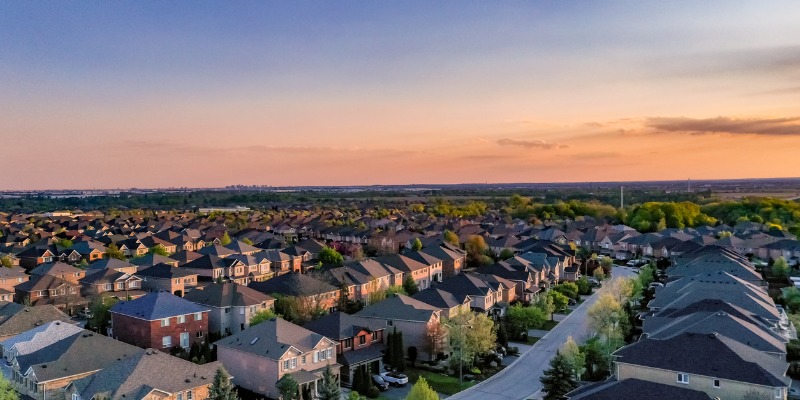Alberta’s continued success depends on maintaining its housing advantage

Faced with high housing costs, many Canadians are voting with their feet. According to a recent report by Statistics Canada, Ontario and British Columbia—Canada’s two most expensive provinces to rent and buy homes—experienced net losses in interprovincial migration in the third quarter of 2022. B.C.’s was the first net loss in almost a decade, while Ontario’s net loss was the largest since 1980.
The chief beneficiary of this trend is Alberta. The province posted its strongest population inflows from other parts of Canada since 1980. And little wonder. Boasting higher after-tax incomes, cheaper housing and shorter commutes (among other advantages), Alberta has prompted many Canadians and their families to move west (or east, for British Columbians).
Moving to take advantage of better employment opportunities and/or lower cost of living isn’t just good for those moving there. It’s good for growing Alberta businesses in search of workers, and thus the economy as a whole. But as virtuous as this cycle may be today, the province can’t rest on its laurels.
The housing market is a tailwind for Alberta today. But it could turn into a headwind if there isn’t enough housing built to accommodate newcomers, as we’ve seen in much of urban B.C. and Ontario. Alberta’s population growth recently returned to levels not experienced since the early 2010s but the number of homes built over the last decade (roughly 30,400 per year) was lower than in the previous decade. Indeed, the high point for housing completions in Alberta (in raw numbers, meaning not adjusted for population) was actually 1978 and 1979, when 43,025 and 44,492 homes were completed respectively, and when the province’s population was roughly half as large as today.
The same story is playing out in the rental market. According to the Canada Mortgage and Housing Corporation’s latest Rental Market Report, the Calgary metropolitan area’s rental vacancy rate for purpose-built rental units (an indicator of rental housing availability) fell from 5.1 per cent in 2021 to 2.7 per cent in 2022—the lowest since 2014. Edmonton saw a similar decline, from 7.3 per cent to 4.3 per cent. As a result of reduced availability, average rents rose in both cities, by 6 per cent and 1.6 per cent, respectively.
If Alberta policymakers—at all levels of government—want to maintain their province’s draw to newcomers, they should pay close attention to housing markets and in particular housing supply. When population growth accelerates and housing completions don’t keep up, prices inevitably rise. This is the dynamic leading to higher prices in Ontario and B.C. Policymakers in those provinces are only now scrambling to deal with the fallout.
Alberta can’t be complacent. If it fails to accelerate housing construction, it may face a similar situation—too many buyers and renters competing for too few homes. Instead of squandering its housing advantage, Alberta should let the market build more housing. To fully take advantage of the opportunities presented by rapid population growth, a lot more housing construction will be required. Governments should ensure they aren’t getting in the way.
Authors:
Subscribe to the Fraser Institute
Get the latest news from the Fraser Institute on the latest research studies, news and events.


